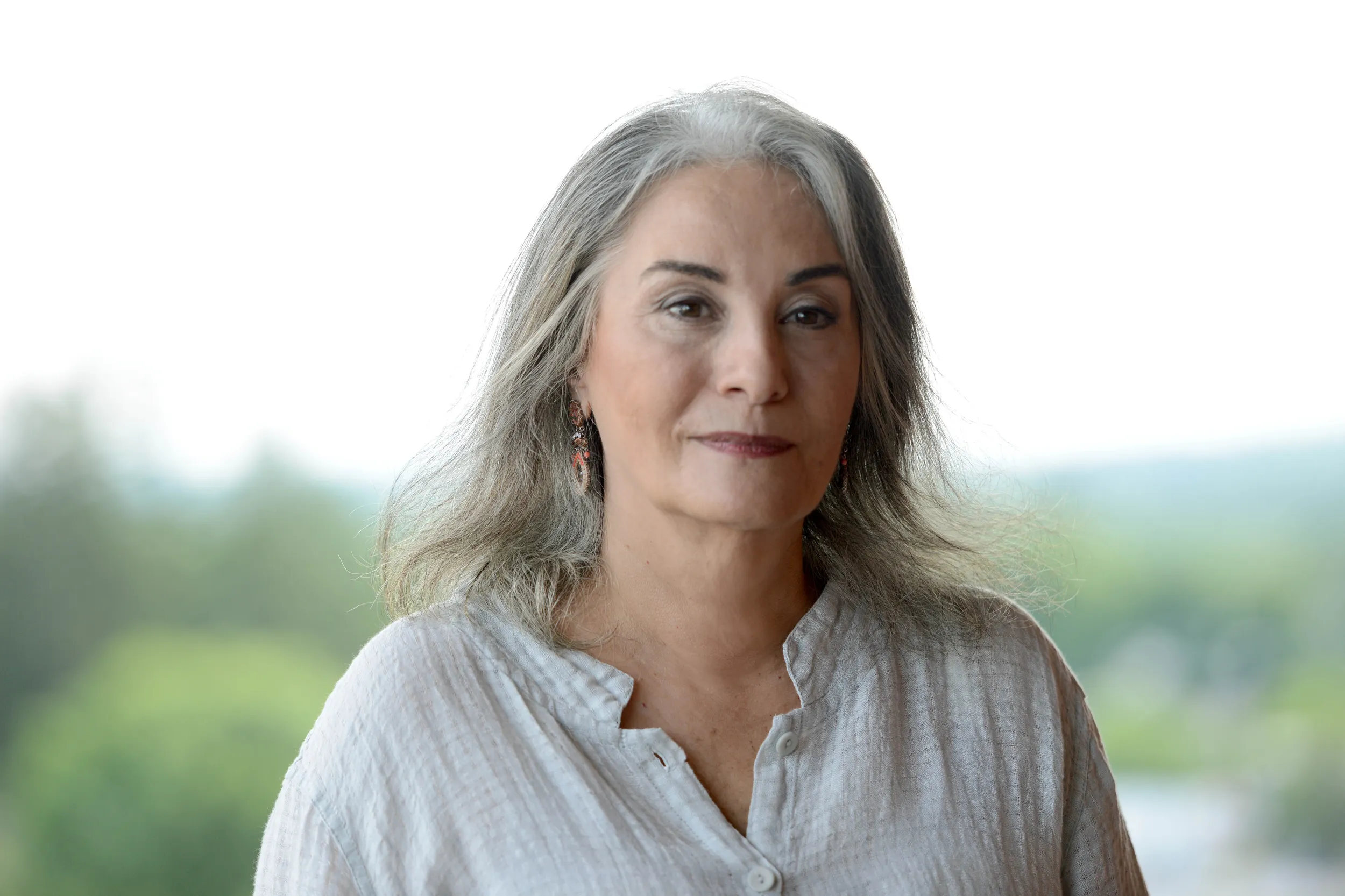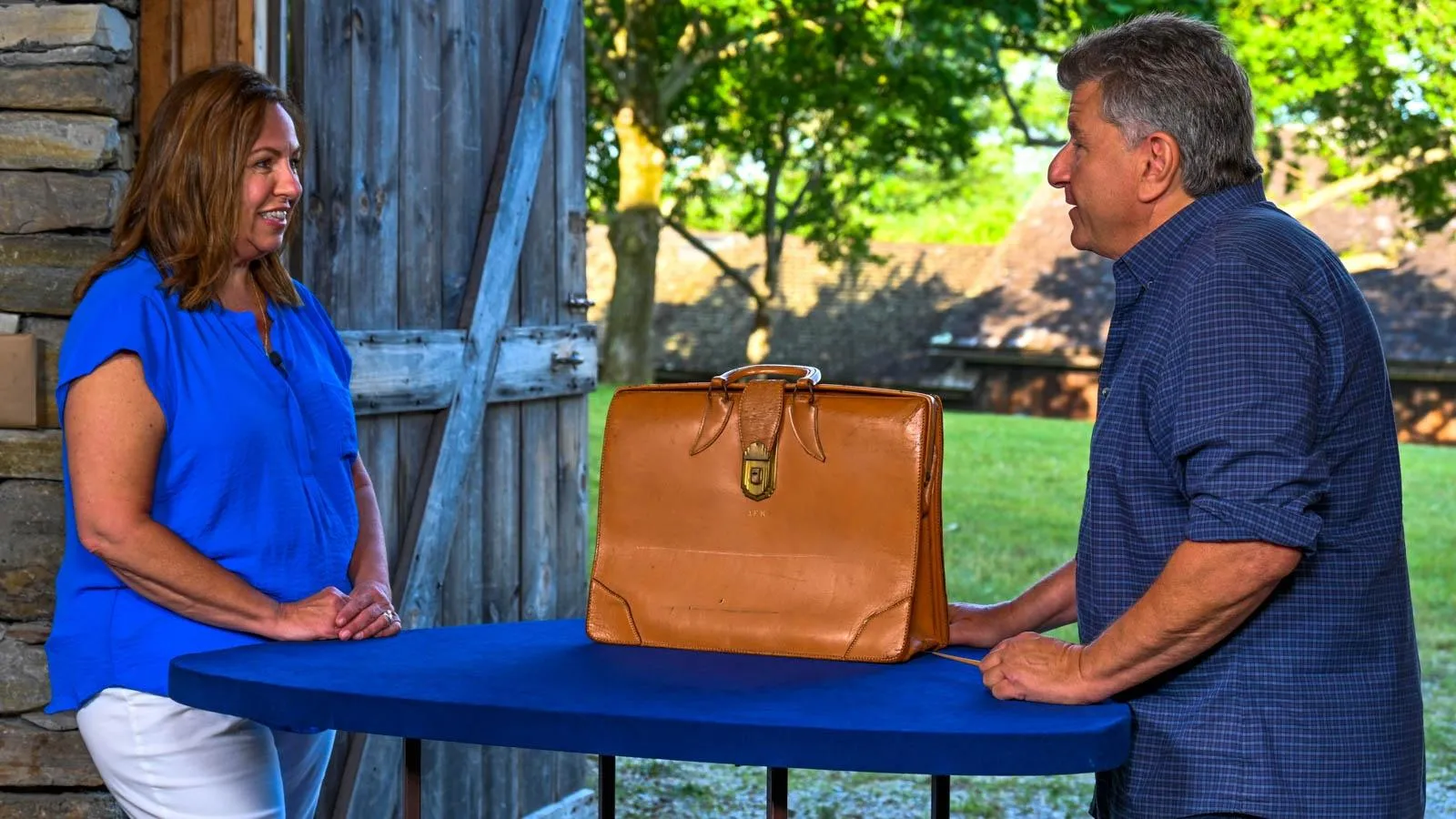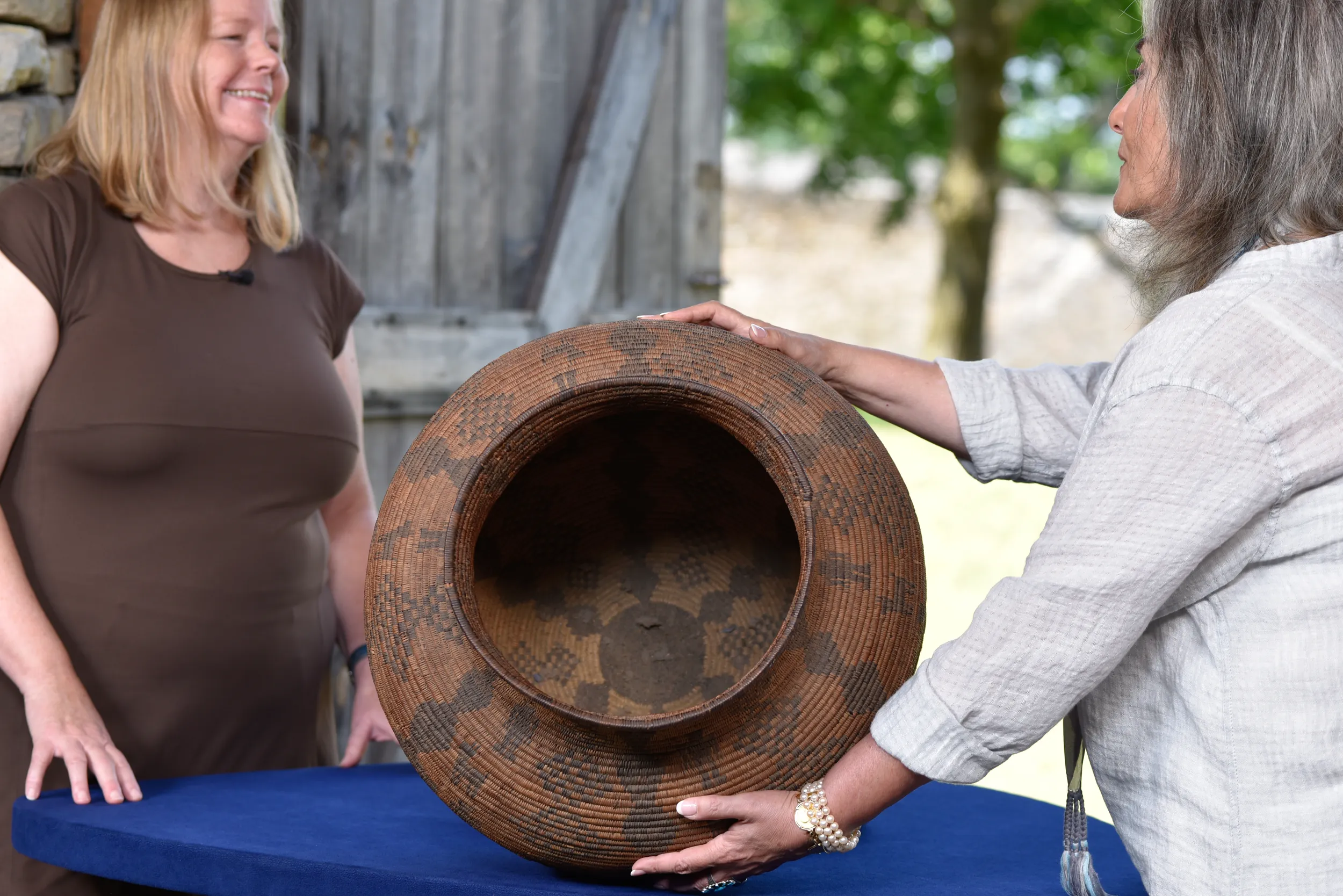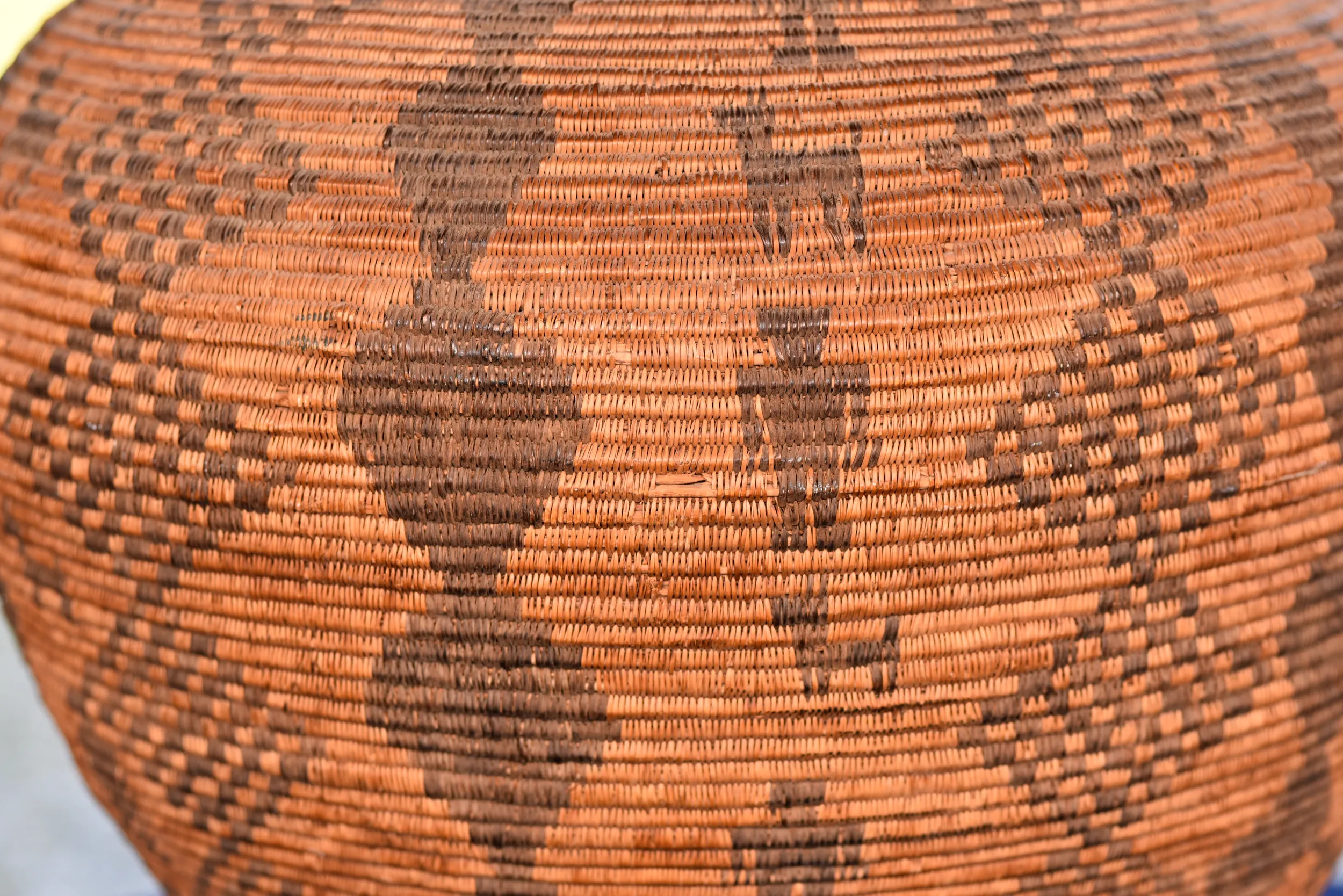GUEST: So it is very dusty. And my grandmother, when she was a little girl in the early 1900s, would hop in and out of it. This was in my grandmother's house outside of Boston. And, uh, when she died and we were breaking the house up, my dad said, "Remember the Indian basket under the stairs." She acquired it from her mother, uh, my great-grandmother. And, um, it, my great-grandmother had received it from an admirer. And, um, my grandmother always remembered popping in and out of the basket. My grandmother, actually, today is her birthday, and she was born in 1904.
APPRAISER: So this has been in your family for quite a while.
GUEST: Right.
APPRAISER: This basket speaks of the turn of the century, so it was probably created about 1890 to 1900. It's called an Apache oya, and the term "oya" is a Spanish word for jar.
GUEST: Hm.
APPRAISER: So the Apaches used this for grain storage.
GUEST: Ah.
APPRAISER: This is a masterwork by the Apache of the American Southwest. And so there, it's from Arizona from the time period that they were making them for grain storage.
GUEST: Hm.
APPRAISER: They were masters at achieving symmetry and decoration. As the tourist trade started to open up, they would actually make them bigger and taller.
GUEST: I love the little, I don't know if it's a horse or a dog.
APPRAISER: It's probably a dog.
GUEST: Okay.
APPRAISER: With the tail up, probably it's a dog.
GUEST: Okay.
APPRAISER: And men, um, on this, as well as the geometric patterns. It's in remarkable condition. It's, it's a little dusty. But that...
GUEST: (giggles): Yeah, that's because we put it up high to k, keep it away from kids and a cat.
APPRAISER: Right.
(both laugh)
APPRAISER: And, which is fine, and that can easily be corrected, but it has a lovely t, appearance. The form is exquisite, but they're incredibly heavy. And that's, um, when you carry them, you need to carry 'em by their bases.
GUEST: Right.
APPRAISER: 'Cause you grab it by the rim, you might end up with the full section of the rim in your hand. Have you ever had it appraised before?
GUEST: No, and, you know, it's actually always just been a backdrop of my life. It's just, to me, it's just, like, it's a practical thing of beauty.
APPRAISER: And no one ever came in the house and said, "Oh, my gosh, do you know what you have there?"
GUEST: (chuckles) No, because, um, honestly, I, we were kind of busy raising kids, and I just needed to make sure that it was okay.
APPRAISER: Right.
APPRAISER: Well, if this was to come to auction, on a sophisticated marketplace, it would sell for about $15,000 to $18,000.
GUEST: Wow. That's really something.
APPRAISER: It's really gorgeous.
GUEST: Yeah.
APPRAISER: I mean, the form on it is exquisite. I love the aged look on it. It has a, a, it has a lovely...
GUEST: Patina.
(both laughing)
APPRAISER: Has... You've been watching the ROADSHOW, haven't you?
GUEST: Yeah.













